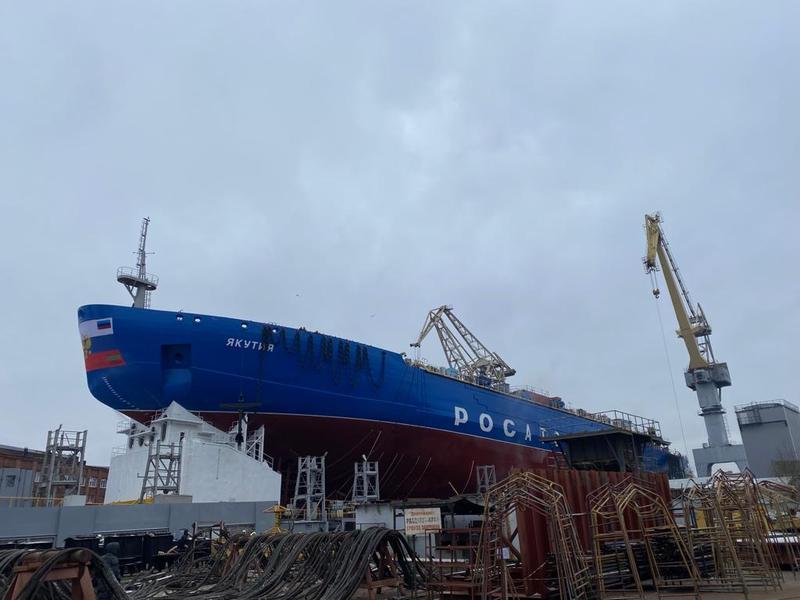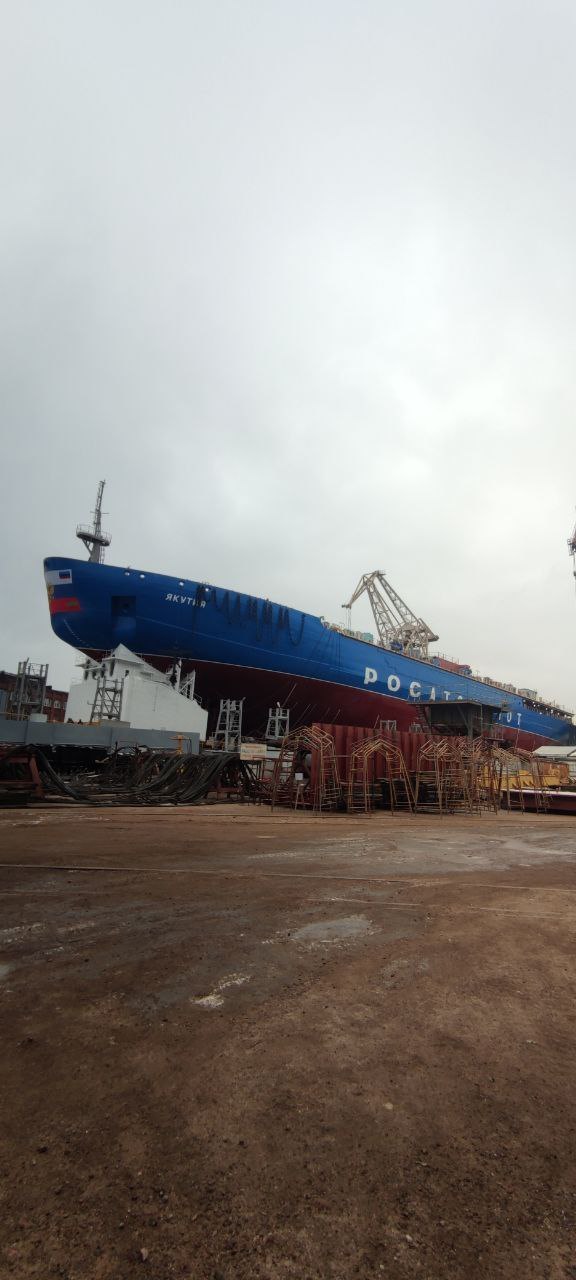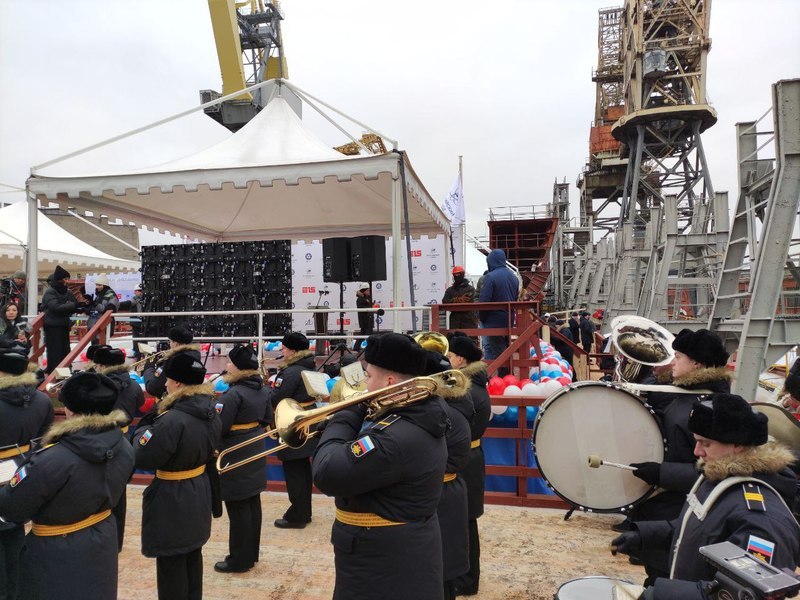
Russian President Vladimir Putin participated in the ceremony via videoconference
The third serial nuclear-powered icebreaker of Project 22220, the Yakutia, has been launched today, 22 November 2022, at Baltiysky Zavod shipyard (United Shipbuilding Corporation, USC), IAA PortNews correspondent reports from the ceremony. Deputy Prime Minister Viktoria Abramchenko took part in the ceremony as the ship’ godmother. Russian President Vladimir Putin participated in the event via videoconference.
The launching of the Yakutia was followed by the ceremony of flag-hoisting on the Ural, the second serial ship of Project 22220.
The President thanked all specialists involved in creation of sophisticated vessels for their contribution and professionalism. The transcript is available on the official website of the Kremlin.
“According to the plan, the Ural is to commence implementing its tasks in December of the current year while the Yakutia is to be delivered in the end of 2024. The delivery of one more serial icebreaker, the Chukotka, is scheduled for 2026. Besides, Far East shipyard Zvezda is to complete the construction of superpowerful nuclear icebreaker Rossija in 2027 – it is a superpowerful icebreaker indeed, the one of a kind in the world,” said the president emphasizing that the gained pace of the work should be kept strictly.
“Ships of that high ice class are of a strategic significance for us. They are needed for the Arctic exploration and development, for ensuring safe and sustainable shipping in the region, for building up shipping on the Northern Sea Route,” added Vladimir Putin.
According to him, the Northern Sea Route development will let Russia better fulfill its export potential, establish efficient logistic routes including those to the South-East Asia.
The Yakutia was laid down on 26 May 2020. It he third serial nuclear-powered icebreaker of Project 22220 and the fourth ship in the series ordered by Rosatom to Baltiysky Zavod.
Key particulars of Project 22220: LOA - 173.3 m (160 m, DWL), beam - 34 m (33 m, DWL), depth – 15.2 m; height - 52 m; draft (DWL) - 10.5 m; minimum draft – 9.2 m, full displacement – 33,540 tonnes; maximum icebreaking capability - 2.8-meter-thick ice (at full capacity and speed of 1.5-2 knots); designated service life - 40 years, crew - 53.
Their key task is to ensure year-round navigation in the western Arctic, escorting of ships in shallow areas of the Yenisei estuary and the Gulf of Ob, towing of ships and floating facilities in ice-covered and ice-free waters; participation in rescue operations in ice-covered and ice-free waters.
Multipurpose nuclear-powered icebreakers of Project 22220 ships are the world’s largest and most powerful icebreaking ships. Icebreakers of 22220 design will form the basis of Russia’s civil icebreaking fleet in the near time.
Saint-Petersburg, Russia based Baltiysky Zavod shipyard (Baltic Shipyard) was established in 1856 and today is a 100% subsidiary of the state-owned United Shipbuilding Corporation (USC). The shipyard specializes in the construction of Rank 1 surface crafts, ice class vessels with nuclear and diesel-electric propulsion, of nuclear floating energy units and floating distilling plants. Baltic Shipyard has built over 600 ships and vessels. The shipyard employs more than 6,000 people.
Related links:
Nuclear-powered icebreaker Ural of Project 22220 completed its sea trials >>>>
Photos by IAA PortNews







